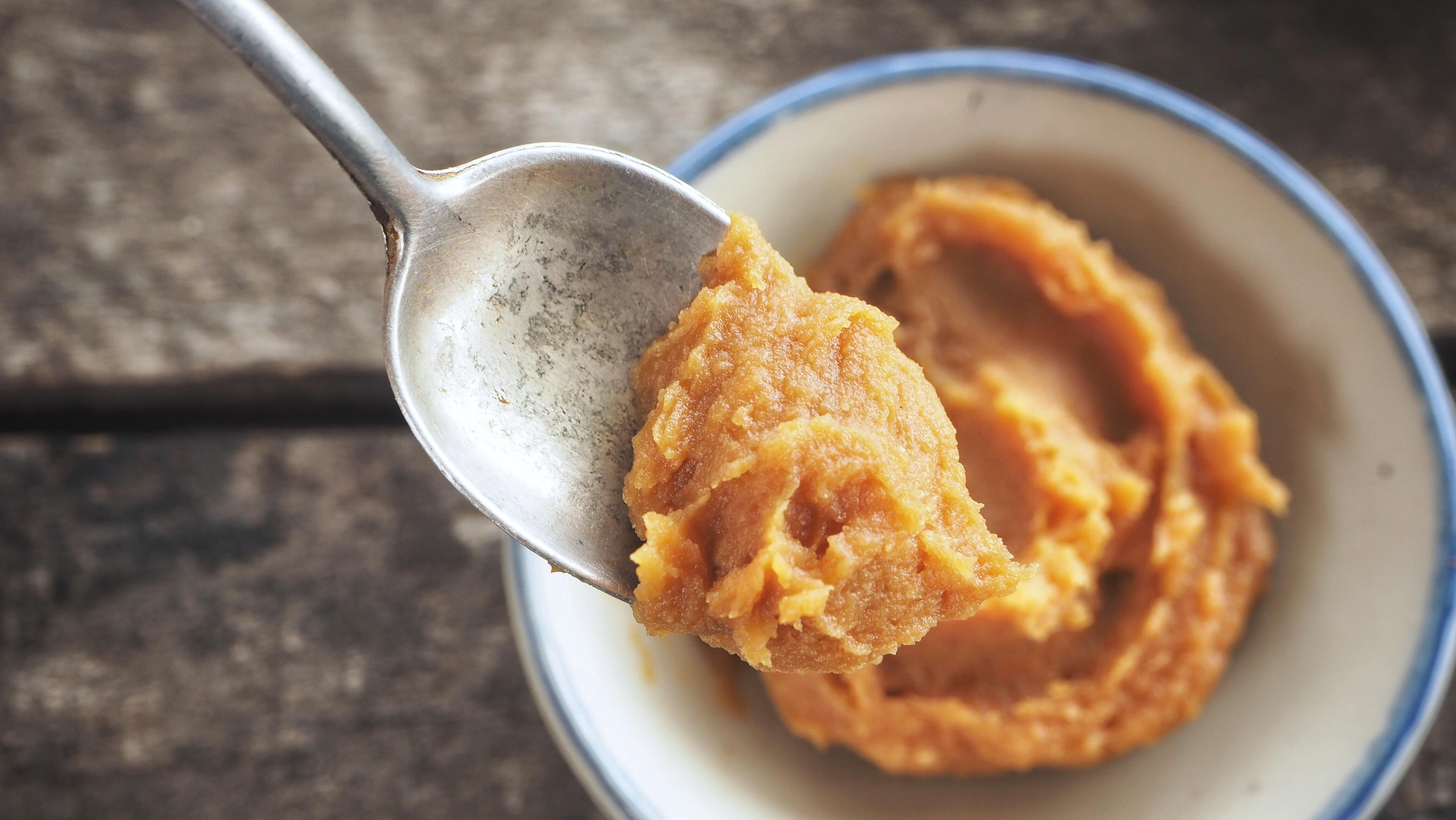How Miso Makes Food Better
It's all about that food term you hear so often: umami.
We may receive a commission on purchases made from links.
Bachan's, makers of our favorite Japanese barbecue sauces, has released a new miso variety available for order on its website. The newest flavor joins a stellar lineup that consists of Original, Gluten-free, Spicy, and Yuzu. What I love about Bachan's sauces is that they're a one-step-to-save-dinner type of condiment—all you need to do is sauce up some veggies, starches, or meat before cooking (or once they're already cooked), and voila, you've got dinner.
But let's focus on that new Miso product, which is a standout. That particular ingredient, miso, is a significant one to bring into the fold. What makes miso so special, and how do you use it?
What is miso?
Miso is a traditional Japanese fermented soybean paste that's made with salt and koji, the fungus used to ferment the beans. You're probably familiar with it in the context of miso soup, which is often served as the first course at sushi restaurants, but its uses stretch far beyond soup. In fact, this fermented soybean paste is so useful that it's one of those things you should probably always keep in your refrigerator.
What does miso taste like?
Miso is marvelously complex and basically captures the essence of savoriness, or umami, all in one go. There are many varieties of miso, typically categorized by color, such as white, red, or mixed. Classifying it as three categories is almost oversimplifying it, so if you want to learn more, this primer from Epicurious is an excellent place to start.
How can you use miso in cooking?
Traditionally, miso is used as a base for soup, yes, but it can also be applied to marinades, dips, and glazes, hence the newest addition to the Bachan's lineup. You can mix it into butter, build it into a sauce, or use it as a secret ingredient in a salad dressing. It's even generally friendly for vegans, but as always, just check the ingredients list to be sure.
Using miso in recipes is not limited to Japanese cuisine, either. This caramelized mushroom pasta recipe uses miso to bolster the natural savoriness of the mushrooms. We're also big fans of this miso butter spaghetti carbonara, a great blend of Italian and Japanese cooking.
But one of the coolest things about miso is that it's useful in sweets, too. Miso as a component of dessert was particularly trendy about 10 years ago; here's a Wall Street Journal piece for reference. Since it's salty, tangy, and complex, it's a ridiculously good complement to the sweet flavors of brownies and caramel. Sure, culinary fads come and go, but that doesn't mean that the combination stops being delicious. For proof, try this recipe for Miso Ramen Halva candy, in which miso plays nice with sugar and tahini.
If you pick up a tub of miso paste at the store—it's so common that most supermarkets carry it now—be sure to keep it refrigerated. Once it's open, it'll last up to a year. Simply check on it now and then to make sure it's not moldy; to prevent it from darkening in color, just place a piece of plastic wrap directly onto the surface of the paste to keep it from coming in contact with air. This will prevent your miso from oxidizing.
Of course, keeping your miso fresh won't actually be a problem once you start using it, because you'll quickly find yourself adding it to everything. Once you get the hang of it, you'll need to add it to your grocery list more often than you think.
